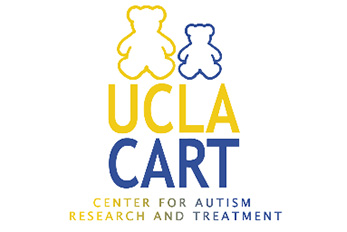
This article was published in UCLA Semel’s CART newsletter.
I first came to UCLA as a doctoral student in the Department of Psychology. During my time at UCLA, I learned about advancements in autism, the friendship program, and the latest behavioral interventions. Little did I realize that 20 years later I would come back to UCLA seeking help for my teenager with autism. My son, Eli, who has ASD, participated in the PEERS program for teens in 2017, two years ago, at the age of 13. And my husband and I, along with the other parents of the PEERS group, received our own PEERS education simultaneously. We became Eli’s “social coaches.”
The 16-week PEERS for Adolescents pro- gram was truly transformational. Our teens, (and us social coaches) were given a strategic “rulebook” on how to engage in various social situations, best practices to make and keep friends, including target behaviors and nonverbal cues. This could include anything from how close to stand to people while conversing, to finding common interests as a way to get together with potential friends, to what is (and isn’t) appropriate humor. The teens were also given the opportunity to practice their new skills with the other group members.
All of the skills being taught in PEERS had been shown to be empirically valid — in other words, PEERS wasn’t making up what they thought was needed in social interactions. Instead, they did research to find out which skills mattered, how to teach these skills to teens, and assessed changes in the adolescents’ social skills at the end of their 16 weeks in PEERS, and even years later. As a psychologist, this thoughtful scientific inquiry was extremely important to me.
As a neurotypical parent, I could see the “mistakes” my son had been making, but I didn’t have a guidebook to proactively instruct him on alter- native behaviors and positive strategies. After every session, we practiced these new skills and then he would try them out on teens outside of the program. In time, he became more confident, more socially appropriate, and happier. We were told that the progress would continue after graduation from PEERS, and it has. Now two years after completing the the program, Eli is the manager of the boy’s high school basket- ball team and is LOVED by his classmates — often called the “nicest kid in school.” Without some of these tools, he might not have naturally attracted the same students that are now drawn to him.
Despite these improvements, a year after graduating from PEERS we noticed that there was something missing. Eli was developing an interest in girls, which was age appropriate. “Who liked who….” and “who is so and so’s girlfriend/boyfriend…” was common speak at school in the 8th grade. Eli had learned skills on how to make and keep friends, but did not know how to show “romantic” interest in someone the way the other kids did. And we didn’t have a rule book including how to ask someone out, how to flirt, or differentiate between showing an interest in a girl or stalking! As a psychologist I am well-versed in the literature that shows that romantic relationships can be predictors of overall mental health and happiness as adults. I wanted my son to have the opportunity to date and have such relationships. Just as these concerns were starting to surface, I heard from Dr. Elizabeth Laugeson (the brains behind PEERS) that she was playing around with the idea of a PEERS for Dating curriculum and I became excited with this possibility. At that point, we decided to meet to figure out how to make PEERS for Dating a reality.
During our meeting, Dr. Laugeson explained to us that she had tried for years to get funding to develop and test PEERS for Dating. Although everyone seemed to agree that this was a much-needed intervention, the funding wasn’t there. While she and I knew the importance of romantic relationships (which starts with ability to date) and its connection to mental health (e.g., people unable to form romantic relationships have higher rates of depression, shorter lifespan, etc.), funding agencies considered dating interventions something extra, like a bonus to more convention may actually be an essential ingredient to good mental health. My husband and I want that for our son and for other teens and adults on the spectrum. And so it was decided. We would make PEERS for Dating, and the research behind it, our philanthropic mission.
Our family’s decision to make PEERS for Dating a reality, and to support the research behind the program, began just over one year ago. In a few weeks, our son will take part in the first installment of the research program — a weekend “boot camp” on dating — which is available to both teens and adults. The boot camp, like PEERS for Dating, will include lessons on flirting, asking and going on dates, and general rules about dating etiquette. This two-day boot camp will help Dr. Laugeson and the PEERS team work out the kinks before they begin a randomized controlled trial to study the efficacy of this cutting-edge program. Like previous studies with the PEERS interventions, participants in the 16-week PEERS for Dating program will be assessed before and after the treatment to assess changes in mental health, happiness, skill acquisition and generalization to determine the efficacy.
It is our family’s hope that through this groundbreaking research, countless adolescents and adults with autism spectrum disorder will experience the life transforming effects of this powerful program. To help those with ASD lead more meaningful lives through the development of relationships with others is not only our hope, it is our mission. This is the story of one family’s journey in becoming autism research advocates.
This article was published in UCLA Semel’s CART newsletter.
Your fulfilling life might be just a FREE consult away. Book now!